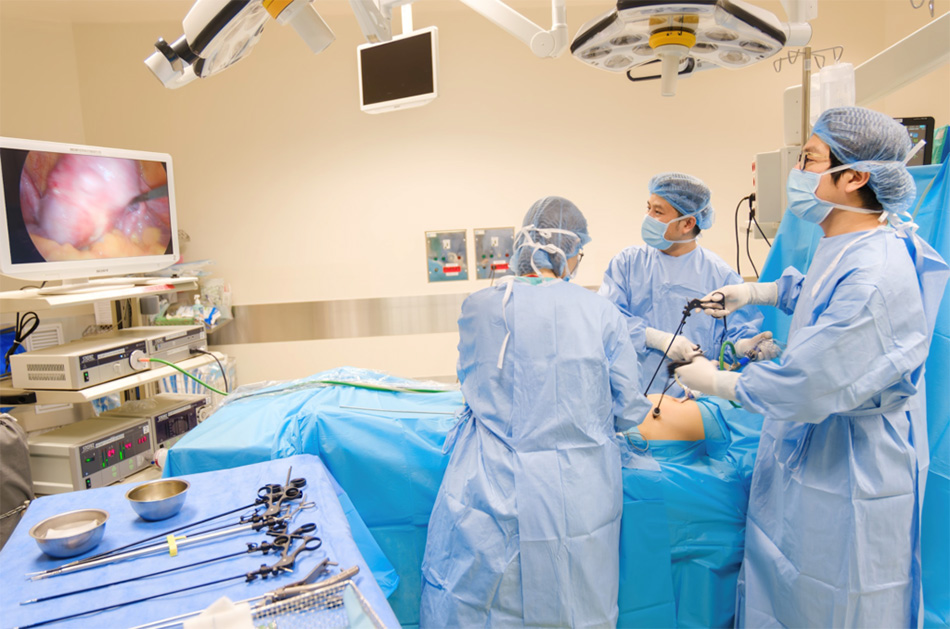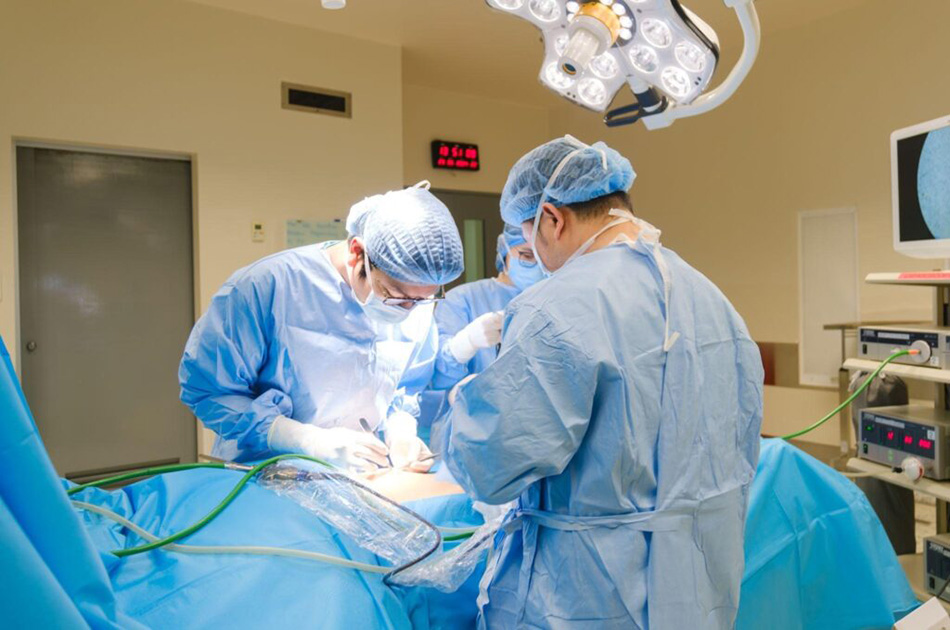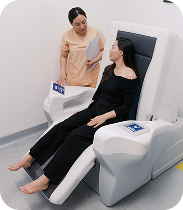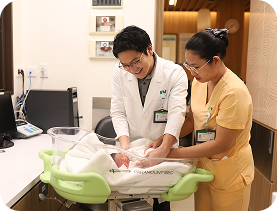Uterine Fibroid Removal, Preserving the Function of Motherhood
Uterine fibroids are usually benign, and most women can live with these tumours. However, when the tumours are large and accompanied by complications, they need to be treated.
Friday, 07/06/2024 | Maternity | by FV Thomson
Uterine fibroids are usually benign, and most women can live with these tumours. However, when the tumours are large and accompanied by complications, they need to be treated. FV Hospital prioritises the removal of uterine fibroids in a conservative manner to preserve the functions of motherhood for women of a childbearing age.
Uterine Fibroids – A potential threat during pregnancy
Uterine fibroids are muscle tumours that develop in the uterus of women of reproductive age, and they can grow rapidly based on hormonal changes. There are usually no typical signs when the tumour is small, but as it grows larger, symptoms may appear such as lower abdominal pain, back pain, pain during intercourse and menstrual disorders like prolonged or heavy bleeding that may cause anaemia due to blood loss. There may also be bowel or bladder dysfunction due to the tumour pressing on the bladder or rectum. Uterine fibroids are also a potential cause of miscarriage or infertility.
Since fibroids develop silently and are mostly benign, many people neglect to have check-ups or, upon discovering the tumour, fail to monitor and treat it in a timely manner. Particularly, the rapid growth of the tumour during pregnancy can pose a threat to the health of both the mother and the foetus.
Vo Trieu Dat, MD, MSc, Deputy Head of the Obstetrics & Gynaecology Department at FV Hospital, recently shared a case involving a 32-year-old pregnant woman who presented with severe abdominal pain and bleeding. Through ultrasound and examination, Dr Dat discovered that the patient was 7 weeks pregnant and had a very large fibroid, causing the uterus to enlarge to the size of a 5-month pregnancy. This tumour was compressing the foetus and causing severe abdominal pain. At the petients request the doctors had to terminate the pregnancy to alleviate her abdominal pain and prevent future complications.

Vo Trieu Dat, MD, MSc, Deputy Head of the Obstetrics & Gynaecology Department at FV Hospital, explained the condition of uterine fibroids to the patient
According to Dr Dat, uterine fibroids are typically benign, accounting for 99% of cases. Most women with uterine fibroids do not require surgery. At the Obstetrics & Gynaecology Department of FV Hospital, 20% of women are examined for uterine fibroids, but only about 5% of these patients are advised to undergo surgery.
Although these tumours are benign, monitoring their condition is very important. Patients should have their uterine fibroids checked every six months, and if treatment is recommended, they should not delay, especially if they plan to have children.
According to Vo Trieu Dat, MD, MSc, Deputy Head of the Obstetrics & Gynaecology Department at FV Hospital, depending on the location and size of the tumour in some cases, women with uterine fibroids can still conceive and give birth normally. “If the fibroid is within the uterine muscle, pregnancy and childbirth can proceed normally. However, if the fibroid is inside the uterine cavity, the risk of miscarriage is very high if the fibroid grows rapidly. When a woman becomes pregnant with a fibroid in the uterine cavity, she needs close monitoring by an obstetrician to manage the pregnancy appropriately. In some cases, if the fibroid is located near the birth canal, the baby can still develop normally, but the mother cannot deliver vaginally and must undergo a caesarean section,” Dr Dat explained.
To ensure safety, women should have regular gynaecological examinations and pelvic ultrasounds before conceiving to screen for any pelvic diseases. If a dangerous fibroid is detected that could affect pregnancy, it should be treated thoroughly before the woman attempts to conceive.
How to treat uterine fibroids while preserving motherhood function?
Doctors usually recommend surgical treatment for uterine fibroids that are 6 cm or larger and accompanied by symptoms such as abdominal pain or prolonged bleeding. The choice of treatment method depends on the size of the fibroid, the patient’s age, and the patient’s preferences.

A large uterine fibroid removal surgery at FV Hospital was performed with the assistance of advanced equipments
Currently, two common methods for fibroid surgery are laparoscopic surgery and open surgery. Open surgery typically results in a long incision, causing prolonged pain and slower recovery for the patient, and is generally reserved for very large fibroids. Laparoscopic surgery is a minimally invasive method that brings many benefits for the patient, such as less pain, shorter postoperative recovery time, better aesthetics, and preservation of the uterus. This method is often chosen by women to preserve their ability to bear children.
“With laparoscopic surgery, the doctor meticulously removes the fibroid in small pieces through a trocar. In return, the patient recovers very quickly after the surgery, often experiencing pain relief within a day and resuming normal activities. Laparoscopic fibroid removal surgery at FV Hospital has a 100% success rate, including cases with large fibroids. Laparoscopic surgery is generally recommended for fibroids under 10 cm, although FV doctors have successfully removed fibroids as large as 12 cm,” Dr Dat explained.

Vo Trieu Dat, MD, MSc performed surgery for a patient with uterine fibroids at FV Hospital.
At FV Hospital, the approach to treatment by preservation methods is always proposed for patients to consider based on their individual circumstances and preferences. In reality, some patients who have been advised surgery to remove the uterus by other medical facilities seek FV with the desire to explore less invasive methods. After reviewing the medical records, FV doctors will successful perform minimally invasive surgery, including laparoscopic procedures, to remove the fibroid tumours while preserving the uterus for the patients. “FV’s treatment approach is always to listen to and understand the patient, we strive to apply minimally invasive methods, reconciling patient preferences with medical indications,” Dr Dat added.
Recently, FV has implemented a new generation of bipolar resection system for fibroid treatment—a minimally invasive method that provides a solution for preserving the uterus. This method is particularly useful for cases such as uterine polyps (endocervical polyps) and submucosal fibroids with tumours ranging from 1-3cm. Using access through the vaginal route, this system accesses the inside of the uterus to resect the lesions.
According to Dr Dat, using the bipolar resection system for fibroid removal is highly effective. Dr Vo Trieu Dat assured us “The new generation bipolar resection system has many improvements over the single-pole resection system, utilising an endoscopic uterine chamber with physiological saline to limit complications for patients during surgery. It has better blood control and visualisation in the surgical field, resulting in high treatment success, reduced surgery time, minimal complications, and faster patient recovery.”.
Recently, FV has also implemented a new ultrasound method by injecting physiological saline into the uterine cavity, which helps to detect almost accurately any lesions within the uterine cavity. As a result, the process of identifying and removing fibroid tumours is conducted with precision and high effectiveness.
To make an appointment with Vo Trieu Dat, MD, MSc, please contact at: (028) 54 11 33 33










